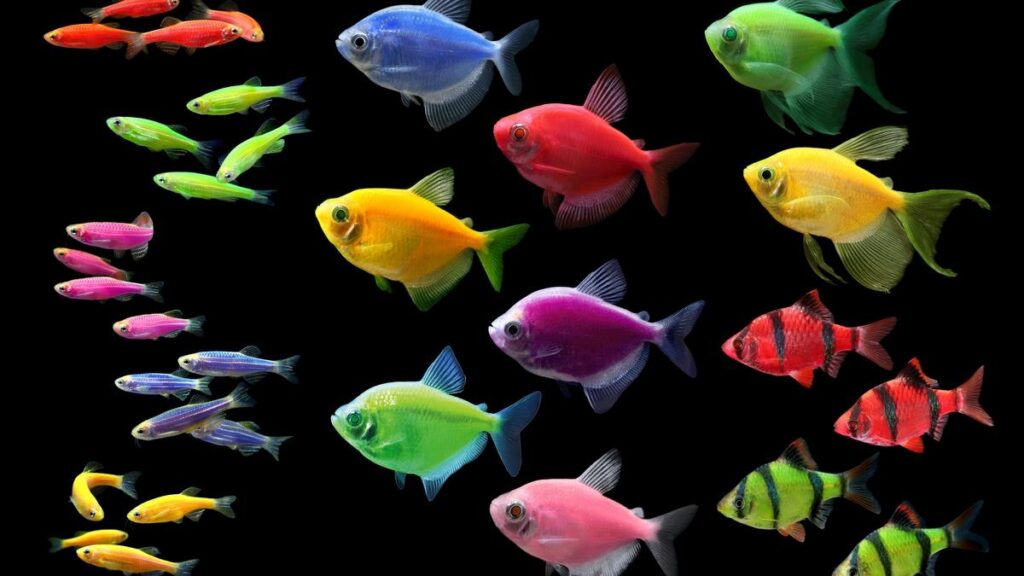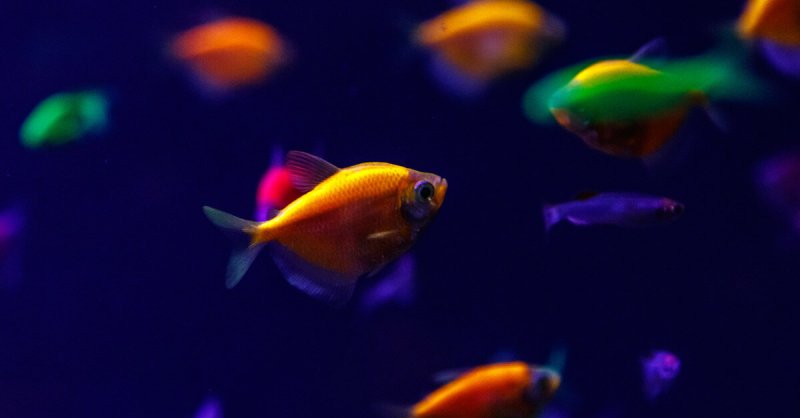Aquarium glow fish are a popular and unique addition to any aquarium. These fish are genetically modified to produce fluorescent colors that glow under black light, making them a fascinating and eye-catching sight to behold. In this article, we will explore the history, types, care, and controversy surrounding aquarium glow fish.
History
The first aquarium glow fish were developed in the 1990s by a Singaporean fish breeding company called Yorktown Technologies. They used genetic engineering to create fish that produce fluorescent proteins, which cause their skin to glow in various colors under ultraviolet light. The first glow fish produced were zebrafish, and they were sold commercially in 2003.
Types of Aquarium Glow Fish
There are several types of aquarium glow fish available on the market today, including:
- Zebrafish: The original glow fish produced by Yorktown Technologies. They come in a variety of colors, including red, green, orange, and blue.
- Tetras: Glow tetras are small, colorful fish that are popular in aquariums. They come in a variety of colors, including red, green, and blue.
- Danios: Glow danios are similar to glow tetras, but they are slightly larger and have a longer lifespan.
- Barbs: Glow barbs are larger fish with a metallic sheen to their scales. They come in a variety of colors, including green, blue, and purple.
Care
Aquarium glow fish require the same care as other freshwater fish. They should be kept in a tank that is appropriately sized for their species and should be fed a balanced diet of high-quality fish food. They also require clean water, so regular water changes and tank maintenance are important.
One thing to note is that aquarium glow fish may be more sensitive to light than other fish, as their bodies are designed to absorb and reflect light differently. They may be more susceptible to stress or health problems if they are kept in bright light for extended periods.
Controversy
Aquarium glow fish have been the subject of controversy since their inception. Critics argue that genetically modifying fish for aesthetic purposes is unethical and unnecessary, and that it may have unintended consequences for the fish and the environment.
Some argue that glow fish could potentially pose a threat to wild fish populations if they were to escape into the wild, as they could outcompete or interbreed with native fish species. There is also concern that the fluorescent proteins used in glow fish could have negative effects on the fish themselves or on other animals that may ingest them.
Proponents of glow fish argue that they are harmless and bring joy to many aquarium hobbyists. They also point out that other types of selective breeding, such as creating new color variations in fancy goldfish or bettas, are widely accepted and do not generate the same level of controversy.
Conclusion
Aquarium glow fish are a unique and fascinating addition to any aquarium. While there is some controversy surrounding their creation and use, they remain a popular choice for many aquarium hobbyists. As with any fish, it is important to provide them with proper care and to make sure they are not released into the wild.






![]()
